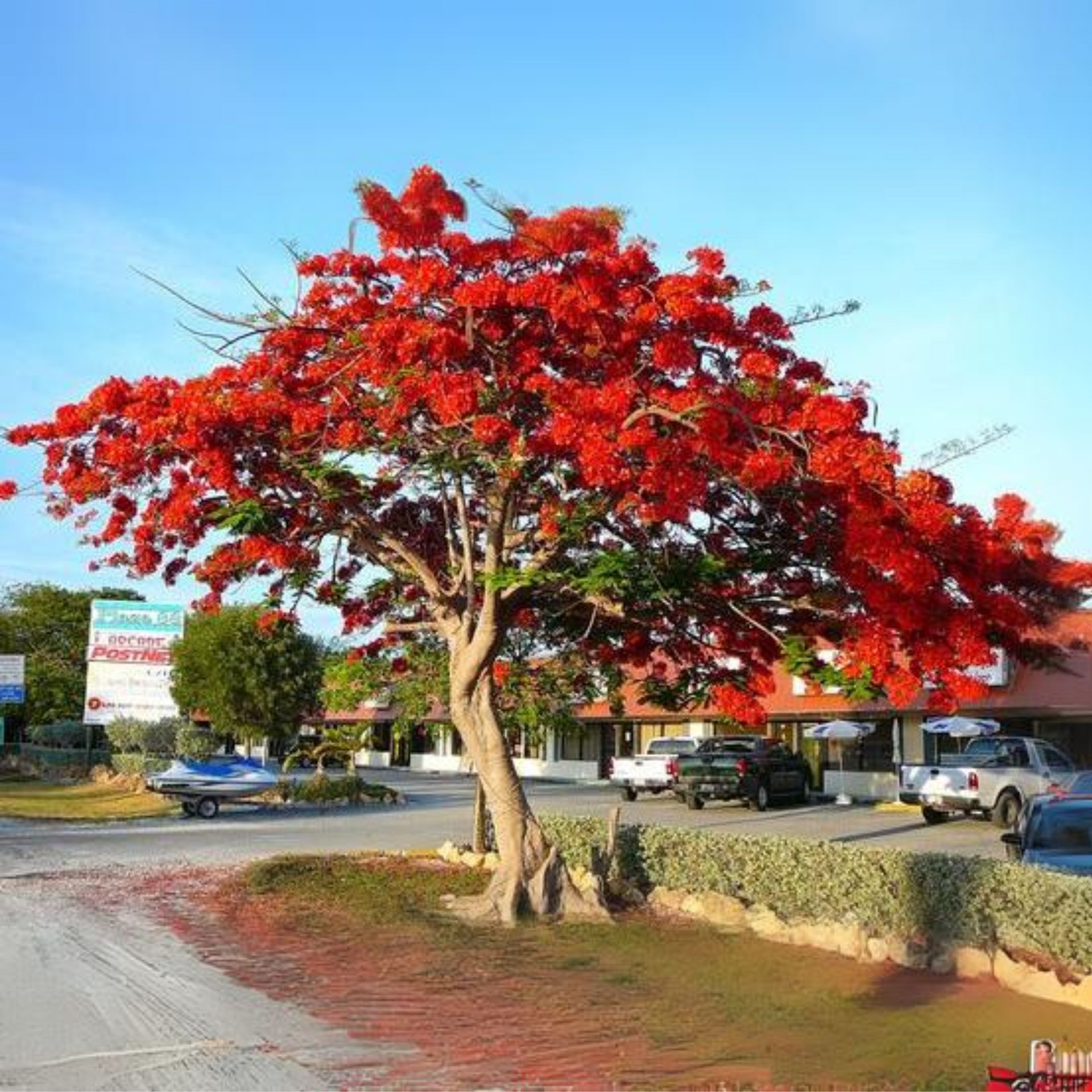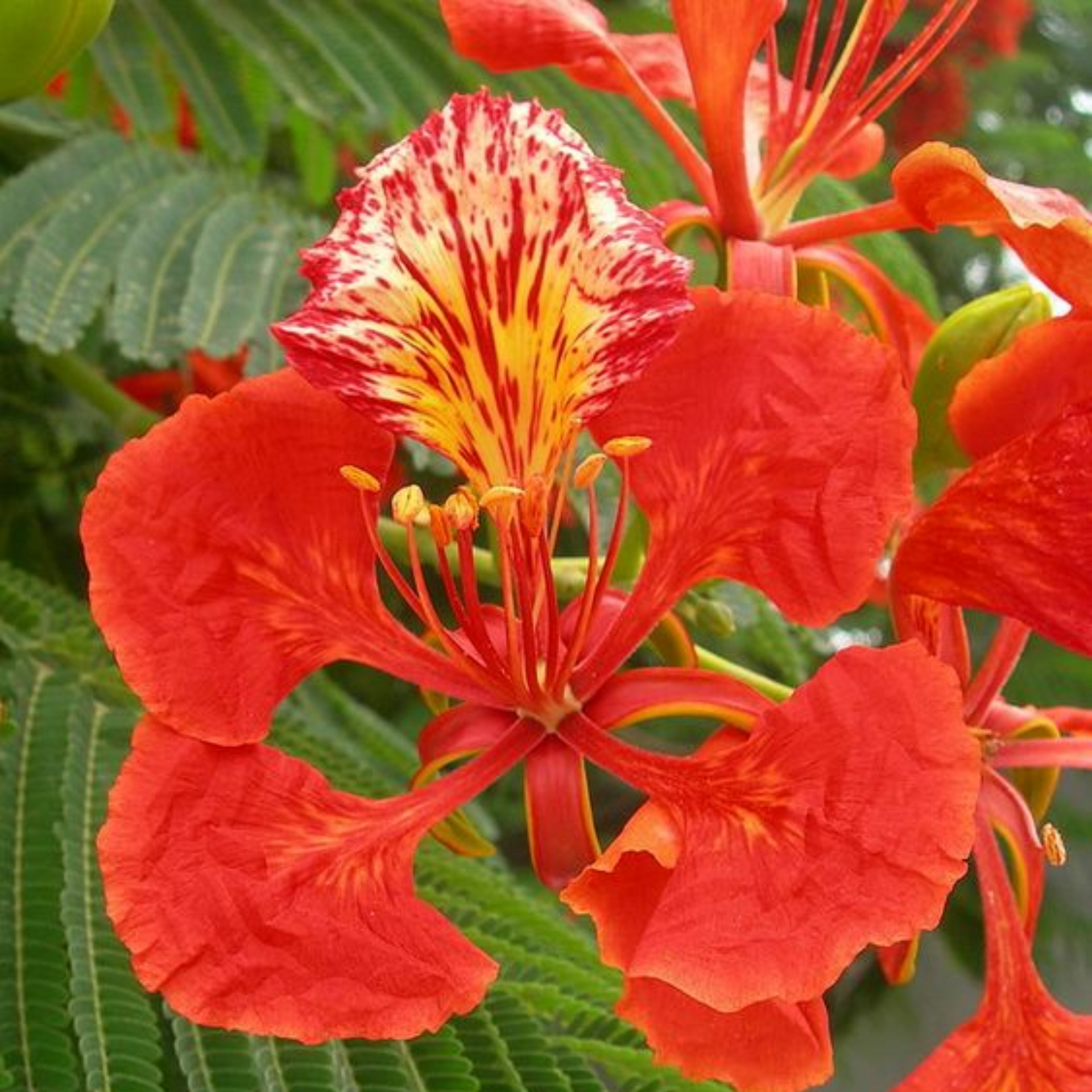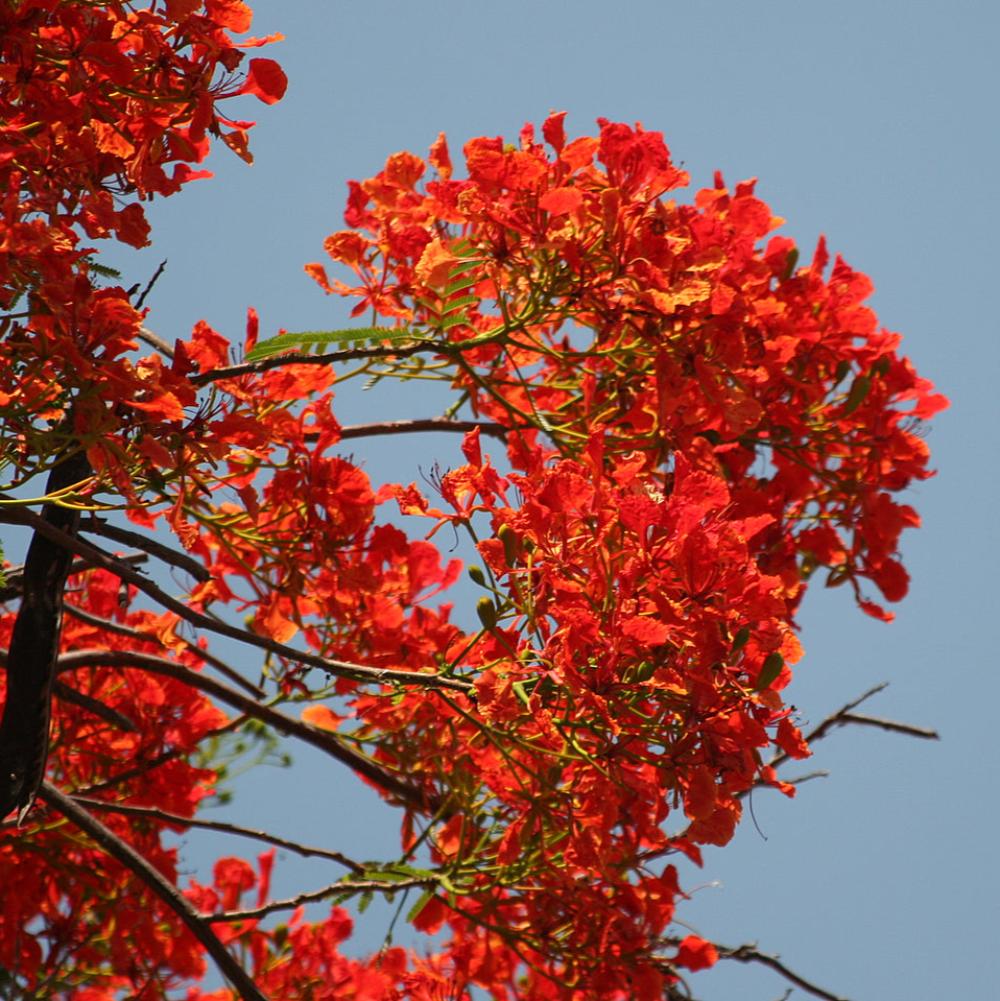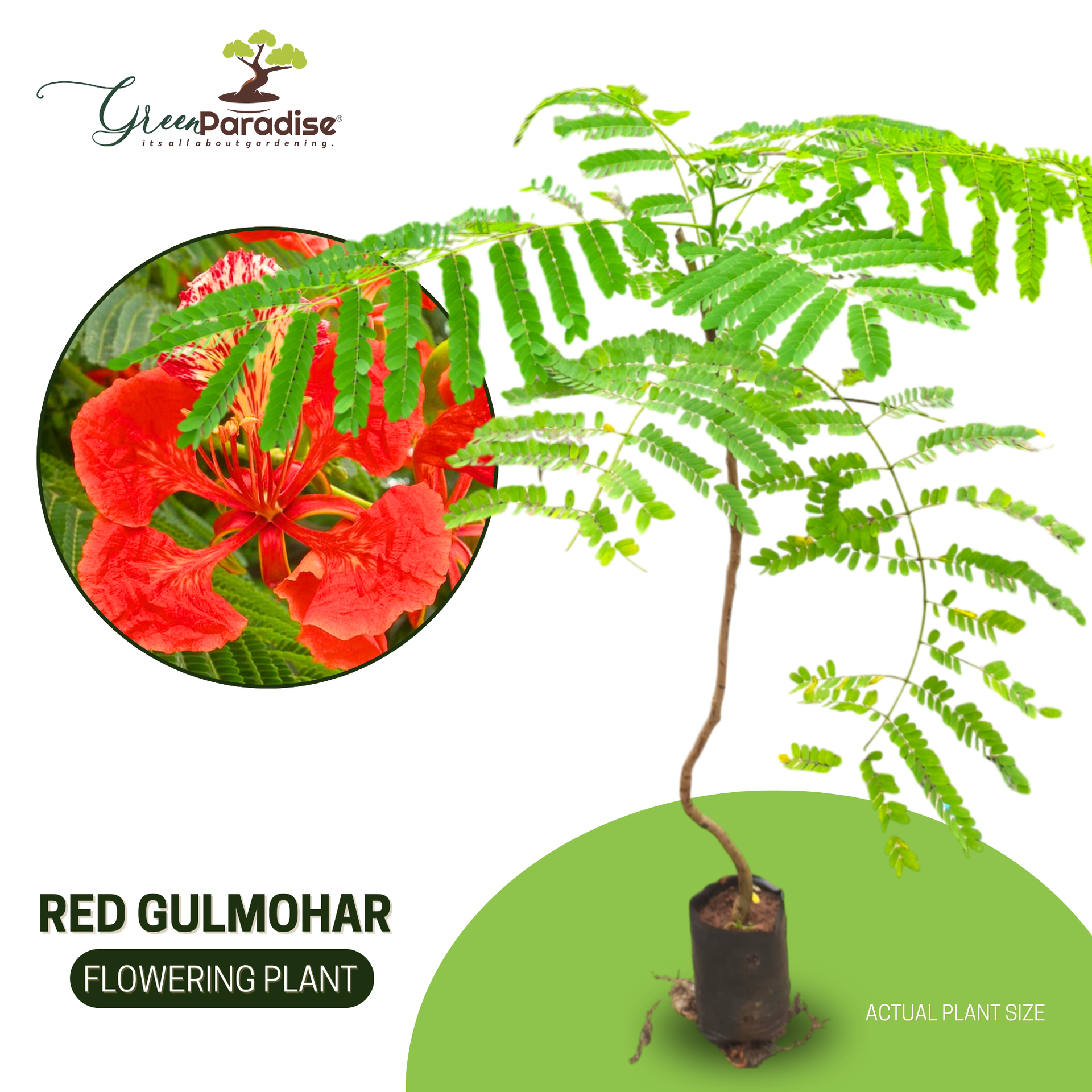



Green Paradise Offers Gulmahor Live Plant
About Gulmahor Plant
Gulmohar (Delonix regia), also known as Royal Poinciana or flame tree or fire tree is one of the most beautiful trees in the world. It is perhaps one of the oldest ornamental trees grown with one of the earliest records of cultivation in India.
Gulmohar, in India, is present abundantly, and almost everyone is familiar with it, that's why it is often referred to as the ‘street tree’. Because of its ornamental value, it has been cultivated and colonized in several sub-tropical and tropical countries.
The tree can thrive in almost all climate conditions except very dry or frosty climates. Flowers bloom in between April and May and in around November the leaves start turning yellow and shedding. It has a shallow root system, making it quite vulnerable to damage in storms. The plant grows up to five feet per year and thus matures and develops pretty fast. Flower color varies from light orange to deep scarlet and other intermediate shades too.
The Gulmohar plant, also known as Delonix regia or the Flame Tree, is a species of flowering tree native to Madagascar. It belongs to the family Fabaceae and is widely cultivated for its striking red or orange flowers and attractive fern-like foliage. Here are some key details about the Gulmohar plant:
Appearance:
The Gulmohar is a deciduous tree that can reach a height of 15-25 meters (50-80 feet) with a spreading crown. Its leaves are bipinnate, meaning they have multiple small leaflets arranged on each leaf. The tree produces large clusters of flowers, typically in shades of red, orange, or scarlet, which bloom during the summer months.
Habitat:
Gulmohar trees prefer tropical and subtropical climates. They thrive in full sun and are often found in coastal regions, where they can tolerate salt spray. The tree requires well-drained soil and can withstand drought conditions.
Ornamental Use:
Gulmohar trees are widely cultivated as ornamental trees in gardens, parks, and along roadsides due to their beautiful flowers. The vibrant red or orange blossoms create a stunning visual display and attract birds, bees, and butterflies.
Symbolism:
In some cultures, the Gulmohar tree is associated with strength, resilience, and fiery passion due to its vibrant red flowers. It is considered a symbol of beauty and is often featured in art, literature, and folklore.
Medicinal Uses:
Various parts of the Gulmohar tree, including its bark, leaves, and flowers, have been used in traditional medicine for their potential therapeutic properties. They have been employed to treat ailments such as inflammation, skin infections, digestive issues, and respiratory problems. However, it's important to note that scientific evidence supporting these uses is limited.
Invasive Species:
In certain regions, particularly in parts of the United States, the Gulmohar tree is considered an invasive species. Its ability to spread rapidly and outcompete native plants can have detrimental effects on local ecosystems. It is essential to check with local authorities before planting Gulmohar trees to ensure they are not invasive in your area.
Remember, if you are planning to plant a Gulmohar tree or any other species, it is crucial to consider the specific climate, soil conditions, and regulations of your region to ensure its successful growth and avoid any negative environmental impacts.






